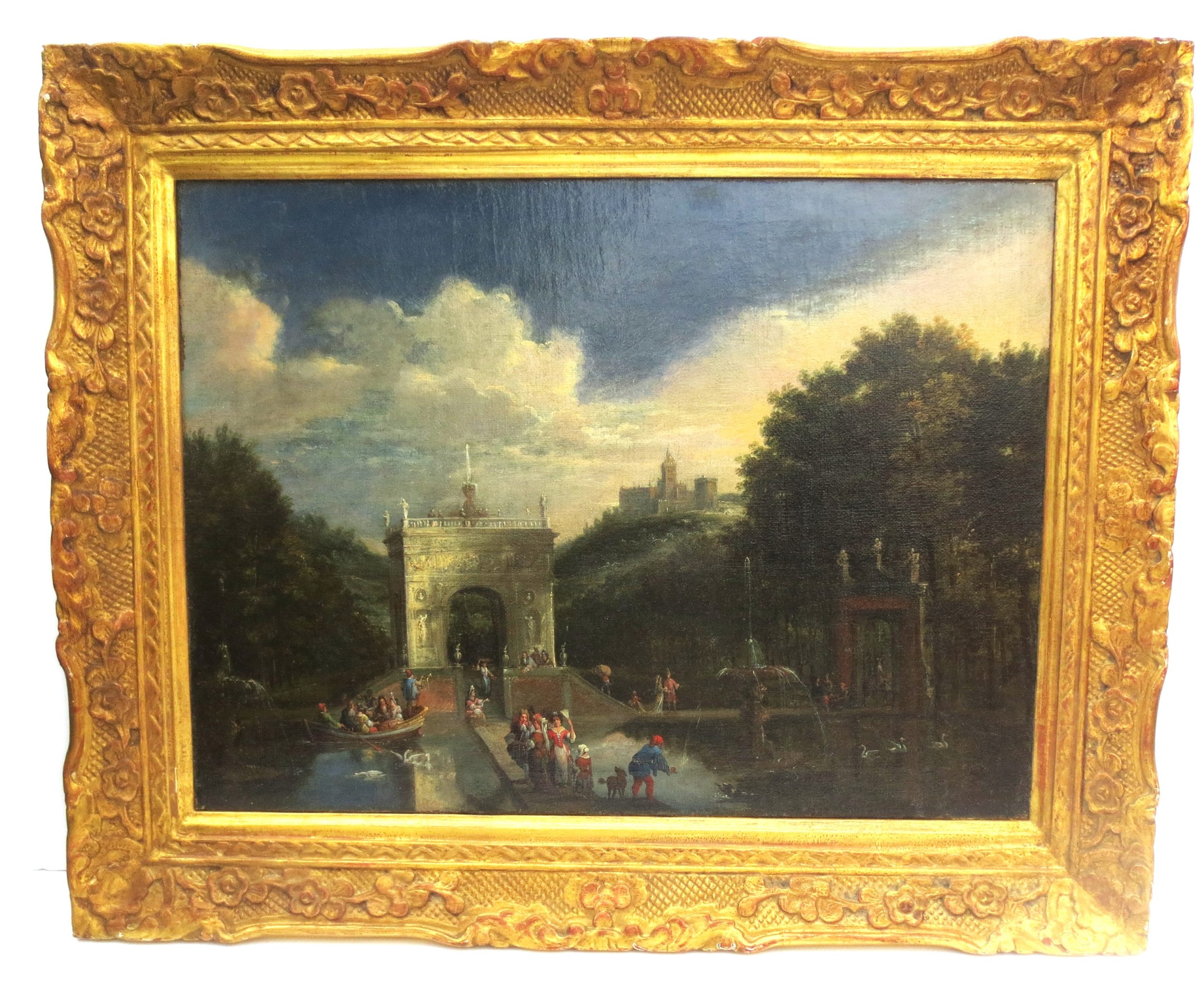According to an eighteenth-century manuscript label in French on the stretcher verso, the painting was done by ‘Glauber,’ while a more recent printed label expands this to Johannes Gottfried Glauber.
Elegant gentry along one of the walkways across the Oder River or its congruent ancillaries towards a triumphal arch on the opposite bank. Small boats with swan figureheads ply the adjacent shallows among live swans. In the distance, Wroclaw Castle rises above the forested hill it still dominates.
Johannes Gottlieb together with his decade older brother, also named Johannes, pursued peripatetic careers from Amsterdam to Paris and Lyon, then Rome and Padua, and Vienna, Prague, and Hamburg, working in good professional company and repute in each locale for a year or two. By 1684, Johannes Gottlieb left Hamburg in service to a German prince, settling for good in the Hapsburg suzerain of Breslau.
For the city itself, its deep cultural and economic legacy toggling between Hapsburg German rule and Polish suzerain cf. Norman Davies & Roger Moorhouse, Microcosm: Portrait of a Central European City, London, 2003, a magisterial history graced with some useful early views and maps. This painting then presents an important rare surviving image, both of the pleasing environs of Wroclaw c. 1700, and the cosmopolitan pleasantries of its urban elite.
The main primary account of Glauber’s career is found in Arnold van Houbraken’s De Groote schouburgh der Nederlandsche kunstschilders en schilderessen, 3 vols, 1718; second edition used here, The Hague, 1753; then too, Swillens’ transcribed and annotated edition from 1943 ff. ought to be consulted as two brief, useful notices in Thieme-Becker and on-line Wikipedia.

